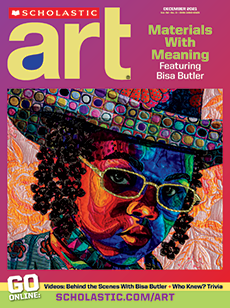Think of a goal you want to achieve. Now imagine that someone says, “No. That’s not the right path for you.” What would you do?
When Laura Owens, above, was in college, some of her male professors discouraged her from studying abstract painting. They thought women should paint realistic subjects. Later, in graduate school, Owens wanted to paint at a time when many believed the art form was old-fashioned.
Owens ignored the naysayers. And today, many art critics believe she is one of the most influential artists of her generation. Some even credit her with “saving painting.”
Can you name a goal you want to achieve? Imagine that someone says, “No. That’s not the right path for you.” What would you do?
When Laura Owens, above, was in college, she wanted to study abstract (simplified) painting. But some of her male professors discouraged her. They thought women should paint realistic art. Many said that painting was too old-fashioned altogether.
But Owens knew she wanted to paint abstract works. She didn’t listen to the people who told her she shouldn’t. Today, some people believe Owens is one of the most important artists of her generation. Some even say she saved painting as an art form.
